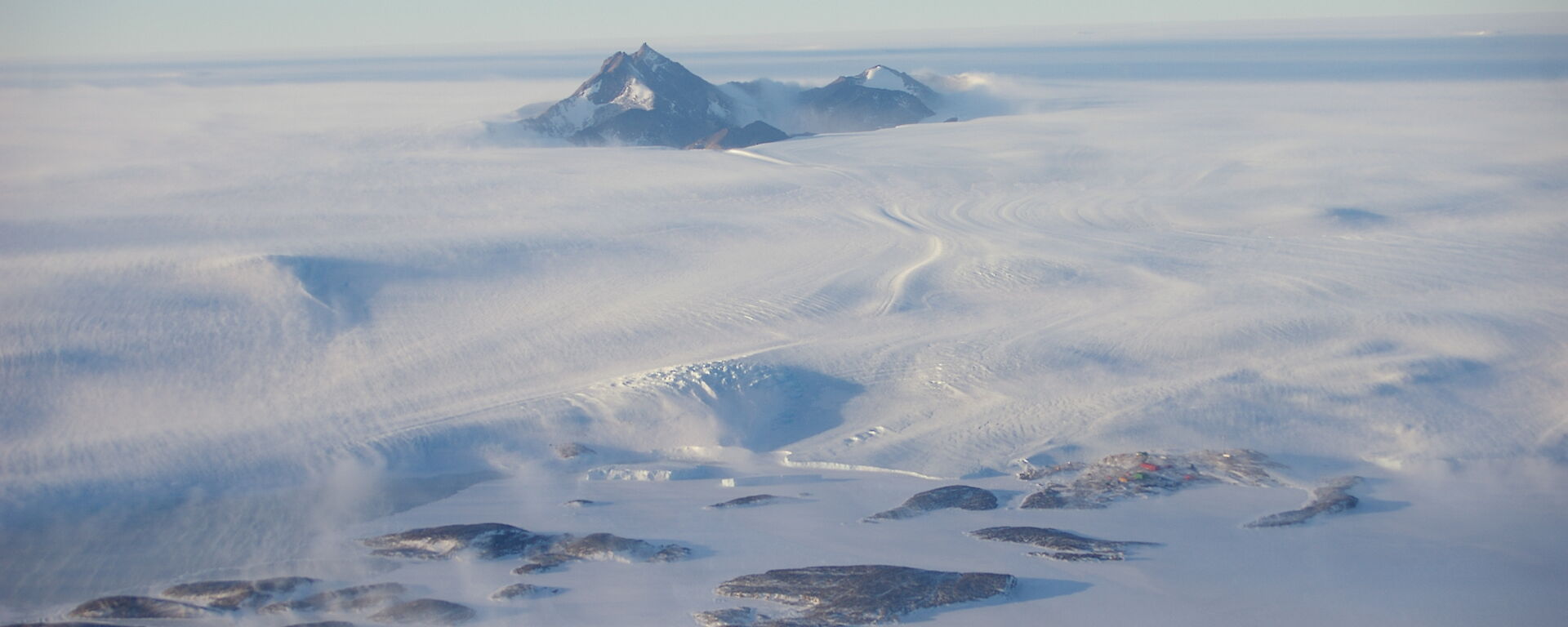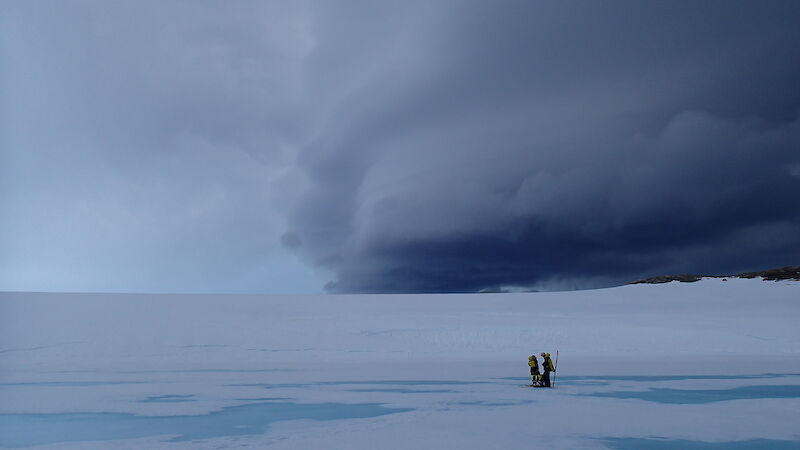The Australian Bureau of Meteorology has a long history of supporting the safe and efficient undertaking of the Australian Antarctic program. We’ve been present at each of Australia’s Antarctic and sub-Antarctic stations since they were established. Bureau meteorologists were also part of some of the earlier heroic age expeditions, including Griffith Taylor, who represented the ‘Weather Service’ (as an ex-Bureau officer) on Scott’s Terra Nova Expedition (1910–1913), and Bureau officer George Ainsworth, who led Douglas Mawson’s team on Macquarie Island in 1911.
Safer and more efficient operations are not the only reason the Bureau partners with the Australian Antarctic Division. The Bureau also has the important Government mandate to monitor the Australian climate. The Bureau’s continuous, quality managed and long-standing record of weather observations from the four stations, provides Australians and the global community with information to research and monitor Antarctica’s weather and climate, and help understand Antarctica’s role within the larger Earth system.
Because weather and climate do not recognise geopolitical boundaries, most nations have agreed to collaborate in the taking and sharing of weather observations for the benefit of the global community. These efforts are coordinated at the global level by the World Meteorological Organisation (WMO), which today comprises 185 member nations, and in which the Australian Bureau of Meteorology plays a proactive role. The Bureau’s weather observation and climate monitoring program follows strict WMO standards, to manually and automatically record and distribute information on wind, atmospheric pressure, humidity, temperature, solar radiation and space weather.
As with most things Antarctic, we partner with other organisations. We benefit from the Australian Antarctic Division’s remote Automatic Weather Station network and VHF wind-profiler for the provision of our aviation forecast services and for the initialisation of our global weather model, the Australian Community Climate and Earth System Simulator (ACCESS). We also partner with the CSIRO and the Australian Nuclear Science and Technology Organisation.
We support various national and international research campaigns. These include the current Macquarie Island Cloud and Radiation Experiment* (Australian Antarctic Magazine 30: 13, 2016), the upcoming Antarctic Cloud and Radiation Experiment, and two wider-ranging Southern Ocean cloud and radiation experiments that will use instruments on land, ships, aircraft and satellites. Other important research is being undertaken in Hobart to evaluate the skill of our seasonal sea-ice forecasts from ACCESS-S (‘S’ for seasonal) as well as evaluate the skill and optimise the polar physics of our shorter term ACCESS-G (global) forecasts in Antarctica.
In terms of direct service to the Antarctic Division, time has proven that meteorologists perform best after they have experienced the local environment first-hand, and that they communicate most effectively when embedded in the operation. This is particularly salient in the Australian context, where many forecasters have focussed their training and experience on phenomena like tropical cyclones, fire weather and flood forecasting, rather than the polar regions. Until they undertake their one month of pre-departure polar meteorological training in Hobart, most of our recruited Antarctic forecasters would have not considered the nuances of katabatic interactions with transient low pressure systems that can whip up 160km/h winds in minutes, or ocean-air-ice interactions that can see a ship disappear in its own localised fog patch.
Our forecasters are typically deployed to where aviation operations are focussed, such as at Casey and Davis over summer and at Macquarie Island during the station resupply. We have an annually recruited workforce of 11 over-wintering observing and technical staff, five summer weather forecasters (often including a Royal Australian Navy forecaster), and another officer or two on project work at any given time. Over the quieter winter season, forecast support is provided on a by-request basis from Hobart. In addition to marine and atmospheric weather, we also warn for tsunami, abnormally high tides, and space weather (which can have detrimental effects on satellite systems and communications).
The future
Increased computing power, more expansive and precise observational systems (particularly from space) and our ever- improving understanding of meteorological and ocean science, suggest that the current gap between seasonal and sub-seasonal modelling will be bridged. We might also expect that coupling of the ocean, ice and atmosphere in numerical weather prediction will be achieved with sufficient skill as to become operational over the coming decade (there’s a bold forecast!). Ensemble forecasts (a set of forecasts) provide decision makers with a sophisticated means of assessing the risk of weather impacts on their operations. On this front the Bureau will improve its provision of training materials so users may best interpret the information provided.
The clear and growing interest in the Antarctic climate is recognised by the Bureau and WMO. Interested national weather services are starting to consider how to collaboratively build an Antarctic Regional Climate Centre, to provide authoritative, standardised and validated products that will better meet the Antarctic operational, research and policy community needs.
To best capitalise on our investment, the Bureau climate monitoring program is renewing its focus on its contribution to the big global initiatives, principally as defined by WMO and partners, such as Global Cryosphere Watch, Global Atmosphere Watch, Baseline Surface Radiation Network, space weather initiatives, and the Global Sea Level Observing System. Options to automate certain processes are also being considered, which may allow us to minimise our staff footprint on Antarctic stations.
Currently, national Antarctic programs collect their own weather, sea ice and climate information and there is considerable duplication of service effort in some areas. For example, near Australia’s Davis station, Russian, Chinese, Indian and Australian national weather offices provide overlapping services for their respective national stations, situated within 100km of each other.
The unique arrangements of the Antarctic Treaty System place the region in a framework of international collaboration that reflects the borderless nature of atmospheric and ocean processes, and the cooperative delivery of weather and ocean services. The Bureau is considering how connecting our services with other international providers could lift service levels for the wider operational community and reduce the cost of production.
In all we do, the Bureau works in close partnership with the Australian Antarctic Division to ensure that our future programs are mutually supporting and aligned with the government’s wider strategy in Antarctica.
Scott Carpentier
Regional Manager Antarctic Meteorology, Bureau of Meteorology
*Australian Antarctic Science Project 4292



